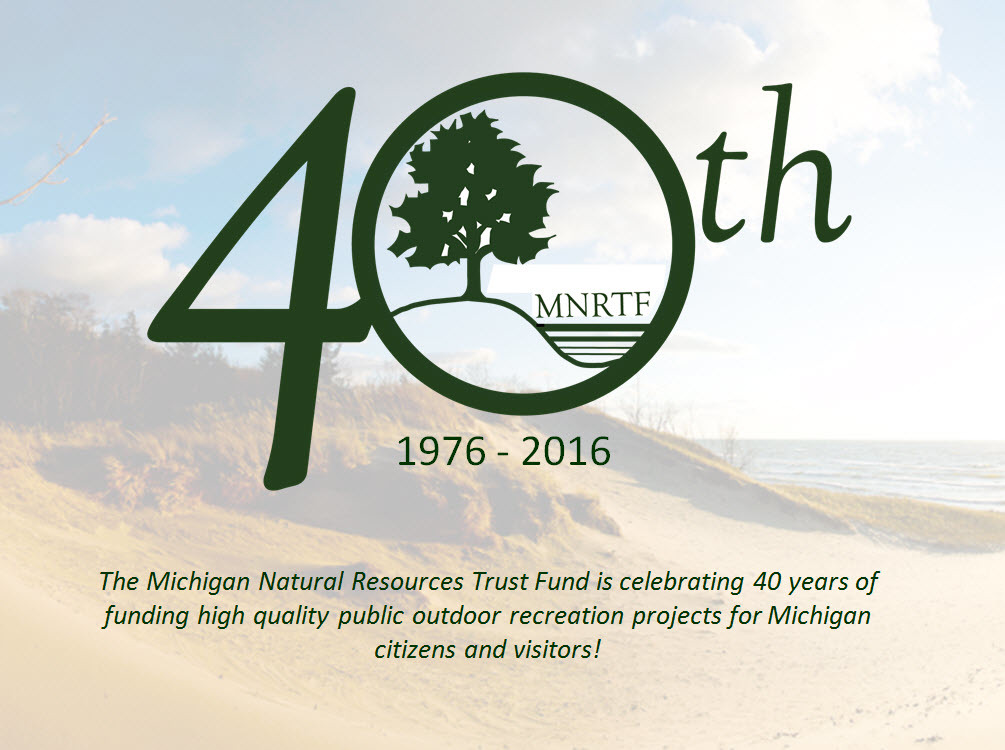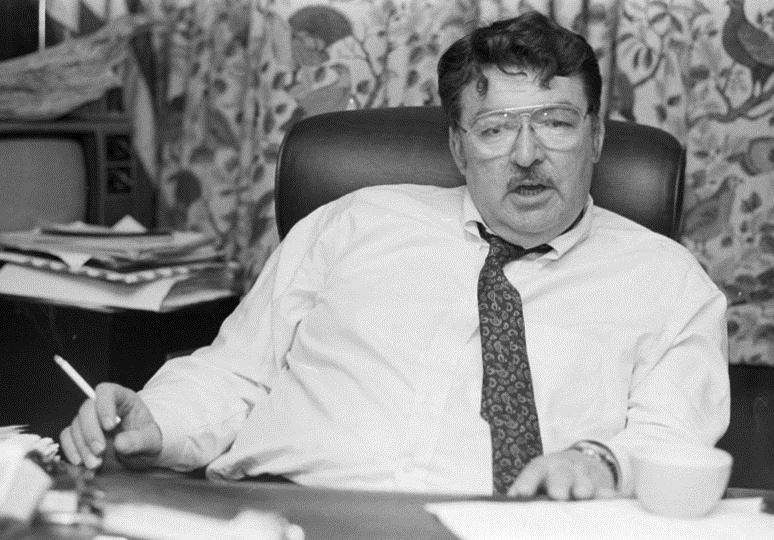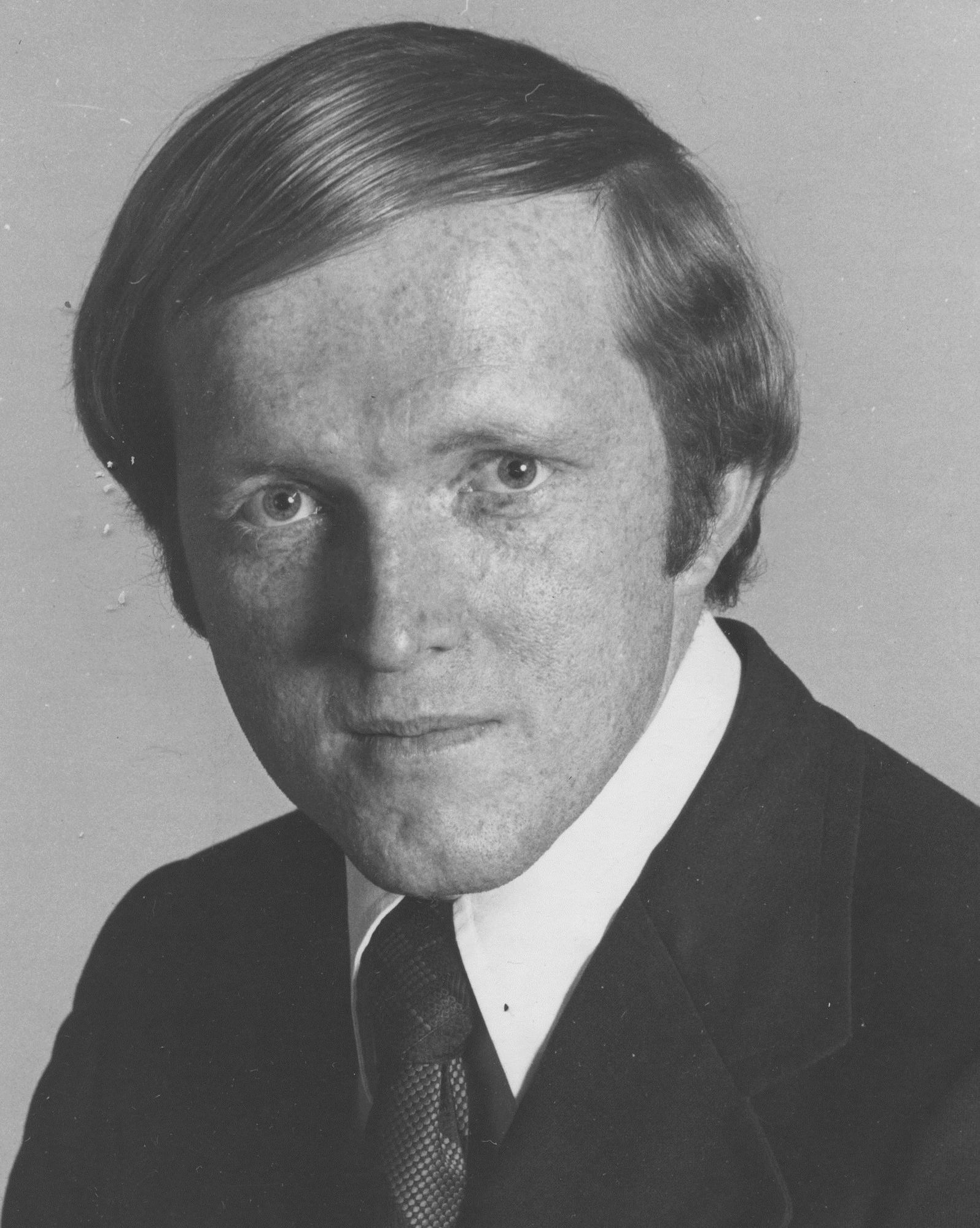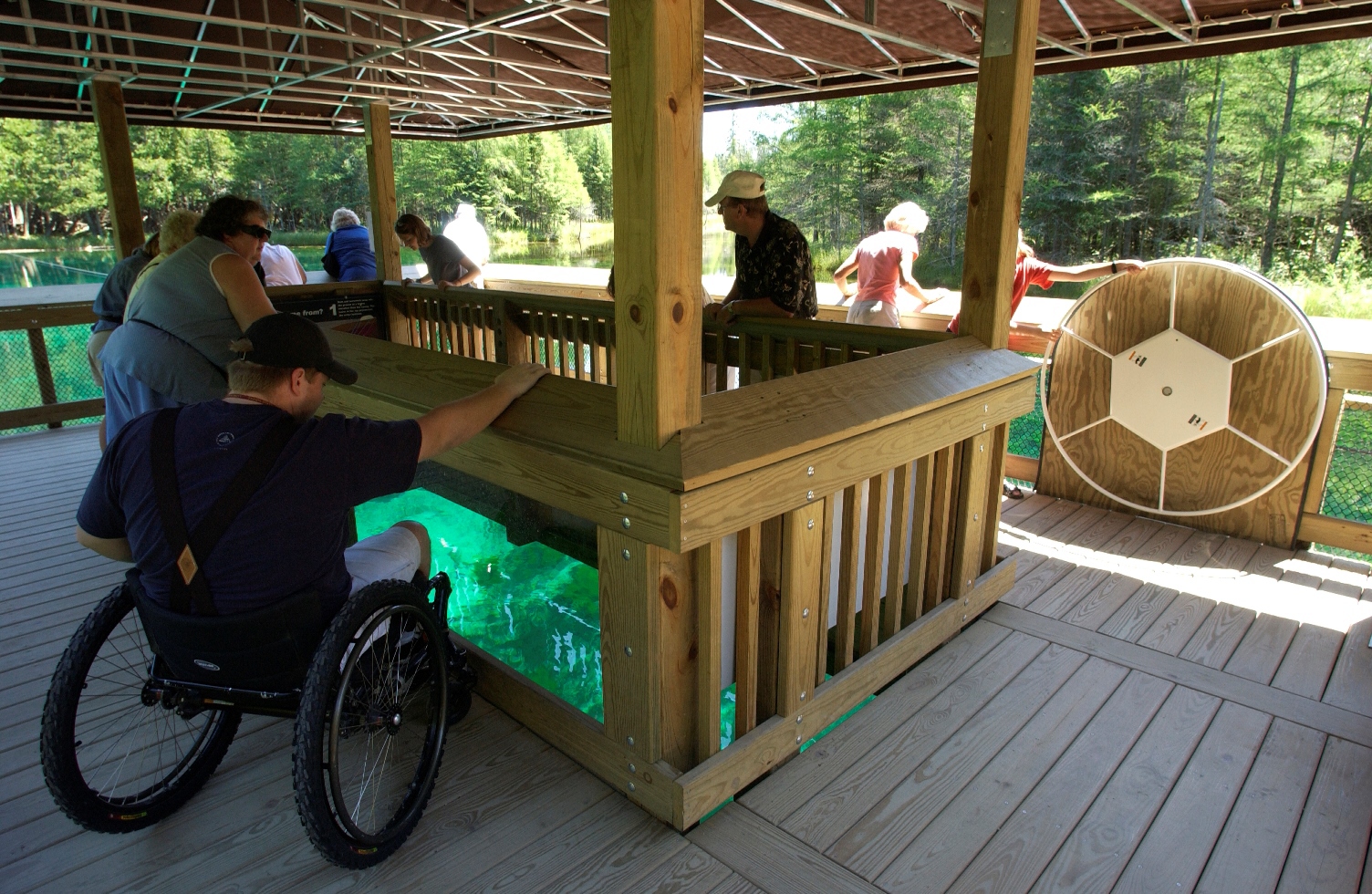|
Editor’s note: This is the first Showcasing the DNR story this year about the Michigan Natural Resources Trust Fund’s 40th anniversary. Others will follow in the months ahead.
Michigan Natural Resources Trust Fund celebrates 40th anniversary
Created amidst political controversy, the Trust Fund maintains a quiet legacy steeped in success
Sometimes silence is louder than words.
That’s Bob Garner’s observation as the Michigan Natural Resources Trust Fund prepares to celebrate its 40th anniversary this summer.
 The fund, bankrolled by royalties paid on the sale and lease of state-owned oil, gas and mineral rights, has quietly generated more than a billion dollars to buy land or land rights, and to develop quality outdoor recreational facilities and opportunities in Michigan. The fund, bankrolled by royalties paid on the sale and lease of state-owned oil, gas and mineral rights, has quietly generated more than a billion dollars to buy land or land rights, and to develop quality outdoor recreational facilities and opportunities in Michigan.
“Nobody talks much about it,” said Garner, a former Michigan Natural Resources Commissioner who served on the board of directors for the Trust Fund for a decade. “I guess that’s an indication of how successful it’s been.”
Garner is in a position to know. He was a 21-year-old aide to state Sen. Kerry Kammer in 1976 when what was then known as the Kammer Land Trust bill became law.
The Trust Fund has financed projects in all of Michigan’s 83 counties.
The fund was created in controversy, with the impetus for its development being what to do about the discovery of oil in the Pigeon River Country State Forest.
Michigan’s oil and gas industry was hot to drill. Many in the conservation community were insistent that Pigeon River Country should never be developed.
Garner is credited by some as the single most important cog in the machine that produced the Trust Fund – an honor that he says is overblown. He gives the bulk of the credit to Tom Washington, the former director of Michigan United Conservation Clubs.
Garner remembers a meeting between Kammer and Washington when Washington first broached the idea.
“Kerry has always given me more credit than I deserved,” Garner said. “Our bosses weren’t talking so Bill Rustem and I had to work things out.”
Rustem, who recently retired as policy advisor to Gov. Rick Snyder, was then Gov. William Milliken’s environmental affairs adviser. The pair worked through the politics that were blocking the idea.
The concept – that money received from the use of the state’s nonrenewable resources should benefit all generations of Michigan citizens – was unique at the time, and Michigan remains one of the few states in the country with such a program.
But the idea of putting all that money in a Trust Fund rubbed a number of lawmakers the wrong way.
“It was a pretty difficult thing,” Kammer recalls. “There were all those folks in the Legislature who had a whole drawer full of programs they wanted that they said wouldn’t cost that much. So there was considerable opposition.”
However, Kammer said there was also considerable support.
“Gov. Milliken was for it, and folks like (former Democratic House leader) Bobby Crim gave us a hand,” Kammer said. “So, for everyone who opposed it, we had supporters.”
 Kammer, who was the state’s youngest senator at the time, said when Washington approached him with the idea, he liked it immediately. Kammer, who was the state’s youngest senator at the time, said when Washington approached him with the idea, he liked it immediately.
“This was a one-time windfall and we knew if we didn’t earmark the money, it would be frittered away,” Kammer said. “It made incredible sense. We had this wealth of resources in the Pigeon River State Forest, and I thought there had to be some middle ground where we could offer protection to the resource and try to do something with the money.”
Kammer said the originators of the Trust Fund hoped it would be successful.
“But I don’t think anybody – Tom or Bob Garner or I – imagined it could have been as successful as it has been,” Kammer said. “Of the bills I sponsored, the one with the most impact is certainly the land Trust Fund.”
Creating the Trust Fund took some maneuvering in the Legislature. Several important committee chairmen had other ideas for what to do with the royalties.
“The politics were more difficult than getting people to buy into the idea of where this ought to go,” Rustem said. “The mantra was, ‘If you are going to take from a nonrenewable resource, then spend the money on a nonrenewable resource.’ You didn’t have to twist arms on the policy; you had to twist arms on the politics.”
Rustem said there were some who opposed it because some in the environmental community thought there shouldn’t ever be an oil well in the Pigeon River Country.
“It’s like most things – you had both the far right and the far left opposed to it,” Rustem said. “But there was a confluence of enough Democrats and Republicans who understood the concept. There were opponents, but it all came together pretty well.”
Garner recalls legislative leaders routing the bill through sympathetic committees to get it to the floor.
“The beauty of it was when someone was going to kill it. The Senate majority leader put it into the Appropriations Committee (instead of Natural Resources) to make sure it got out of committee,” Garner said. “Then it got over to the House and Bobby Crim put it in Tom Anderson’s committee – Conservation, Environment and Recreation – instead of Appropriations.”
Eventually, the legislation was passed into law.
“I don’t want to say it was a nightmare,” Garner said. “It was a very simple bill, about a page and a half. There were a few hiccups along the way, but we got it through.”
The idea was endorsed by the people of Michigan, who twice voted to raise the cap on the Trust Fund.
Originally the fund was capped at $5 million, but later was increased to $500 million.
And though some of the money was diverted by the Legislature over the decades to fund other initiatives, the Trust Fund remains healthy.
“I never thought it would go 40 years without someone glomming on to it,” Garner said.
The $500 million Trust Fund cap was reached in 2011 and represents the permanent investment corpus.
Today, the Trust Fund functions as a permanent foundation without an influx of new revenue. The fund is entirely dependent on investment income to make grants and for asset growth.
Revenue from oil, gas and minerals today is directed to the State Park Endowment Fund.
A little more than a year after the inception of the trust fund, St. John’s Marsh on Lake St. Clair was purchased.
Since that time, the Trust Fund has continued to quietly finance 2,123 additional recreation projects, with more on the drawing board all the time.
Check out a map showing where Trust Fund grants have been awarded since 1976.
For more information on the Michigan Natural Resources Trust Fund, visit the DNR Website's Trust Fund page.
Catch upcoming stories by subscribing to free, weekly “Showcasing the DNR” articles. Previous articles are available at www.michigan.gov/dnr-stories.
/Note to editors: Contact: Jon Mayes, 517-284-5954 or John Pepin, 906-226-1352. Accompanying photos are available below for download. Suggested captions follow. Credit: Michigan Department of Natural Resources.
Bond Falls: New walkways, decks and other improvements made at Bond Falls in Ontonagon County were among the projects completed with help from the Michigan Natural Resources Trust Fund.
Palms Book: Improvements made to a viewing raft and other amenities for the Big Spring at Palms Book State Park in Schoolcraft County were among the projects completed with the help of the Michigan Natural Resources Trust Fund.
Logo: The logo for this year’s celebration of the 40th celebration of the Michigan Natural Resources Trust Fund.
Additional photos: Kerry Kammer and Tom Washington./
The Michigan Department of Natural Resources is committed to the conservation, protection, management, use and enjoyment of the state’s natural and cultural resources for current and future generations. For more information, go to www.michigan.gov/dnr.
|

 The fund, bankrolled by royalties paid on the sale and lease of state-owned oil, gas and mineral rights, has quietly generated more than a billion dollars to buy land or land rights, and to develop quality outdoor recreational facilities and opportunities in Michigan.
The fund, bankrolled by royalties paid on the sale and lease of state-owned oil, gas and mineral rights, has quietly generated more than a billion dollars to buy land or land rights, and to develop quality outdoor recreational facilities and opportunities in Michigan.
 Kammer, who was the state’s youngest senator at the time, said when Washington approached him with the idea, he liked it immediately.
Kammer, who was the state’s youngest senator at the time, said when Washington approached him with the idea, he liked it immediately.





